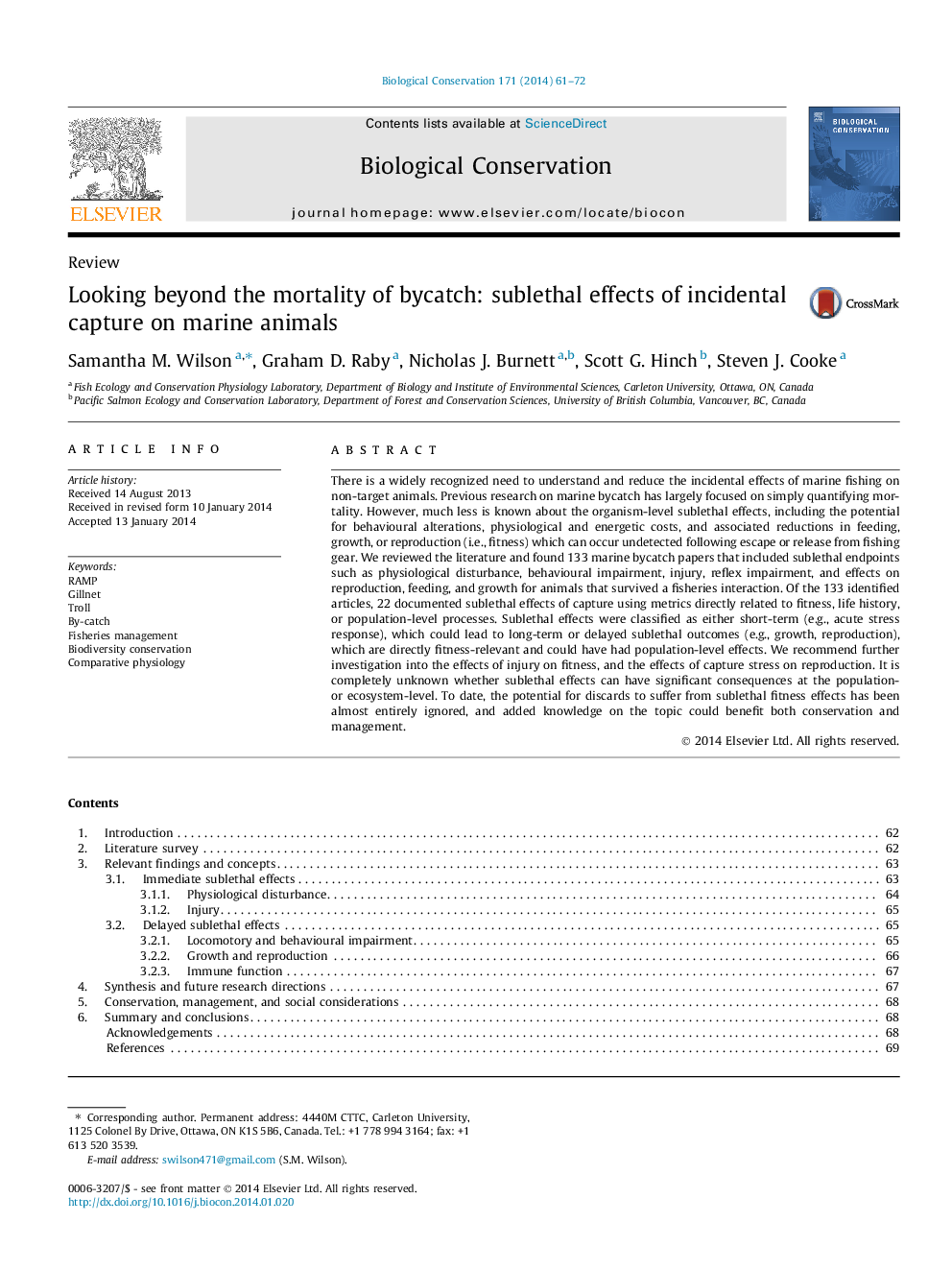| Article ID | Journal | Published Year | Pages | File Type |
|---|---|---|---|---|
| 6299837 | Biological Conservation | 2014 | 12 Pages |
â¢Fisheries bycatch is a threat to conservation of Earth's biodiversity.â¢The potential for bycatch to have sublethal fitness effects has been mostly ignored.â¢We reviewed articles examining sublethal effects of marine bycatch.â¢Only 22 studies have linked sublethal effects of capture with fitness.
There is a widely recognized need to understand and reduce the incidental effects of marine fishing on non-target animals. Previous research on marine bycatch has largely focused on simply quantifying mortality. However, much less is known about the organism-level sublethal effects, including the potential for behavioural alterations, physiological and energetic costs, and associated reductions in feeding, growth, or reproduction (i.e., fitness) which can occur undetected following escape or release from fishing gear. We reviewed the literature and found 133 marine bycatch papers that included sublethal endpoints such as physiological disturbance, behavioural impairment, injury, reflex impairment, and effects on reproduction, feeding, and growth for animals that survived a fisheries interaction. Of the 133 identified articles, 22 documented sublethal effects of capture using metrics directly related to fitness, life history, or population-level processes. Sublethal effects were classified as either short-term (e.g., acute stress response), which could lead to long-term or delayed sublethal outcomes (e.g., growth, reproduction), which are directly fitness-relevant and could have had population-level effects. We recommend further investigation into the effects of injury on fitness, and the effects of capture stress on reproduction. It is completely unknown whether sublethal effects can have significant consequences at the population- or ecosystem-level. To date, the potential for discards to suffer from sublethal fitness effects has been almost entirely ignored, and added knowledge on the topic could benefit both conservation and management.
